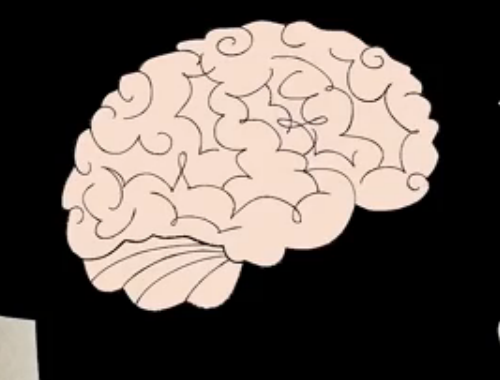The neuroscientists saw multiple areas of the brain light up,
神经科学家看到了脑内多处亮起,
simultaneously processing different information in intricate, interrelated, and astonishingly fast sequences.
同时以复杂、互相关联、惊人的快速序列处理不同的讯息。
But what is it about making music that sets the brain alight?
但究竟弹奏音乐是如何将大脑点亮的呢?
The research is still fairly new, but neuroscientists have a pretty good idea.
虽然该研究才刚起步,但神经科学家有不错的理念。
Playing a musical instrument engages practically every area of the brain at once,
弹奏乐器同时动用到大脑几乎每区域,
especially the visual, auditory, and motor cortices.
特别是视觉、听觉、运动皮质。
As with any other workout, disciplined, structured practice in playing music strengthens those brain functions,
犹如其它锻炼,有纪律、组织性的弹奏练习
allowing us to apply that strength to other activities.

The most obvious difference between listening to music and playing it is that the latter requires fine motor skills,
聆听和演奏音乐最明显的差异是在后者需要精确运动技巧,
which are controlled in both hemispheres of the brain.
这是受大脑两边半球控制。
It also combines the linguistic and mathematical precision, in which the left hemisphere is more involved,
这也结合了大多处理语言及数学精准度的左半脑,
with the novel and creative content that the right excels in.
以及擅长处理新颖、创造性内容的右半脑。
For these reasons, playing music has been found to increase the volume and activity in the brain's corpus callosum,
由于如此,演奏音乐被发现能增加大脑胼胝体的容量与活动,
the bridge between the two hemispheres, allowing messages to get across the brain faster and through more diverse routes.
胼胝体是大脑两半球的桥梁,让讯息能以不同的路途更快速的通过大脑。
This may allow musicians to solve problems more effectively and creatively, in both academic and social settings.
这能使音乐家在学术和社会环境里更有效、有创意的解决问题。
Because making music also involves crafting and understanding its emotional content and message,
因为演奏音乐也触及塑造和了解其感情内容与讯息,
musicians often have higher levels of executive function,
音乐家通常具有较高水平的执行功能,
a category of interlinked tasks that includes planning, strategizing,
类属有互相关联的计画、策略、细节关注等,
and attention to detail and requires simultaneous analysis of both cognitive and emotional aspects.


